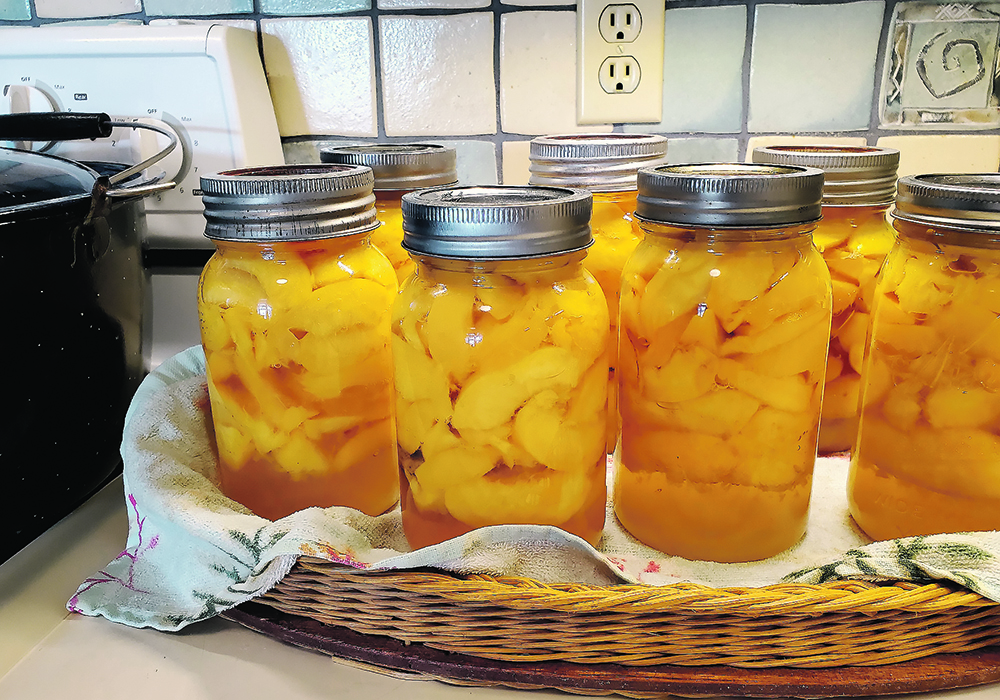Canned food improved soldiers’ nutrition but was slow to catch on until the invention of condensed milk in 1856
It’s not a real summer if I don’t can at least seven quarts (one batch in my canner) of peaches. I’d miss peaches, my favourite canned fruit in the winter, if I didn’t have any.
Nothing good can be said to come out of war unless it’s the inventions that we use today. When Napoleon’s army marched across Europe conquering one country after another, people preserved food by either drying, curing (in salt), freezing, pickling or fermenting (alcoholic drinks, cheese, etc.). People on the go in those days, like sailors and soldiers, ate salted meat and hardtack, a type of dense biscuit dried so hard mould couldn’t survive in it.
Read Also

Fuel rebate rule change will affect taxes and AgriStability
The federal government recently announced updates to the fuel rebates that farmers have been receiving since 2019-20.
The absence of fruit or vegetables in their diet depleted the men’s stamina and ability to withstand disease. Napoleon, observing the toll poor nutrition took on his men, is credited with saying, “an army marches on its stomach.”
He launched the Preservation Prize in 1795, offering 12,000 francs to anyone who could improve the process of preserving food.
A French chef, Nicolas Francois Appert, discovered canning in 1810. He learned that by tightly sealing food inside a bottle and maintaining it at a high temperature for a certain period of time, the food remained safe for consumption until opening. He used glass jars sealed with corks.
In 1811, Philippe de Girard invented a method of preserving food in metal cans that made transportation safer without the risk of breaking glass. His cans were made of sheets of iron coated with tin and rolled into cylinders. Lids were soldered in place by hand. On Girard’s behalf, a British merchant named Peter Durand patented the method.
In 1813, Bryan Donkin served canned beef from a tin to King George III and Queen Charlotte of England. They approved the food for their navy and Arctic explorers. A naval surgeon commented in 1814 that the new tinned food offered “a most excellent restorative to convalescents, and on long voyages, often saved the lives of many men who ran into consumption (tuberculosis) at sea for want of nourishment after acute diseases; my opinion, therefore, is that its adoption generally at sea would be a most desirable and laudable act.” By 1820, Donkin had bought the patent and supplied large quantities to England.
The method was widely used but not understood until Louis Pasteur could explain how it worked and called the process pasteurization 50 years later, in 1863.
The first cans arrived in North America in 1825. Thomas Kensett and Ezra Daggert sold oysters, fruit, meat and vegetables to New Yorkers. Canned food was slow to catch on until the invention of condensed milk in 1856 by Gail Borden. Milk was hard to transport to urban areas and the demand grew with settlement and a rising population. Once again, war played a part in the advancement of new innovations with the start of the Civil War. The demand for canned food and milk flourished.
One problem with the new cans was how to open them. This was done with either a knife or a hammer and chisel. The first crude can opener appeared in 1860, invented by American Ezra J. Warner. A friendlier opener finally arrived in the 1920s.
Glass jars were still used in some situations and John L. Mason’s 1858 invention of the screw-top lid made the use of corks redundant.
Alongside increased consumption came safer canning methods. Research and science played a role in revealing the secrets behind the process, and standard procedures for widespread use were defined. Researchers at the Massachusetts Institute of Technology, Samuel Cate Prescott and William Lyman Underwood, in 1895 identified the bacteria that caused canned clams to swell and introduced pressure canning as a successful alternative to water bath canning.
Home canning took time to come into general use. Guidelines were first published in the United States by the U.S. Department of Agriculture in 1909 and 1910. During the First and Second World Wars, canned food was used extensively to feed soldiers, and canning at home became popular.
During the First World War, communal canning centres were established by the Ball Brothers Company. The pressure canner, placed on top of the stove in home kitchens, became available, and the Mason one-piece screw-top lid was eventually replaced by the improved two-piece lid invented by Alexander H. Kerr in 1915.
The canning centre movement accelerated in the Great Depression of the 1930s because of the widespread decrease in income and unemployment in urban and rural areas, forcing millions of people onto the relief rolls.
Community canning centres provided rural communities with communal access to equipment like pressure canners, which might otherwise have been cost-prohibitive. These centres also increased the safety of home canning through supervision by trained staff who advised in safety measures of the time.
Home canning reached its peak during the Second World War when food rations for both the home front and the front line were introduced because of a shortage of food. Sugar was highly valued and strictly rationed. Households that practiced the canning of food received an extra pound of sugar, increasing interest in canning. Canning decreased again when food rations lifted after the war.
Since then, canning has had several revivals — one in the 1970s with the rise of counterculture and back-to-the-land movements, and one in 2008 after the arrival of the Great Recession. At that time, fears about the economy fused with an ascending do-it-yourself movement and growing concern about BPA, a chemical found in some commercially produced can linings that may be linked to health problems. These trends likely boosted the popularity of canning.
North Americans have taken up home canning again today, either as a hobby or a trend in response to the rising cost of living. When Bernardin announced it had discontinued making lids to fit Gem jars, there was a public outcry as people now returning to the canning culture wanted to buy lids for the popular jar.















